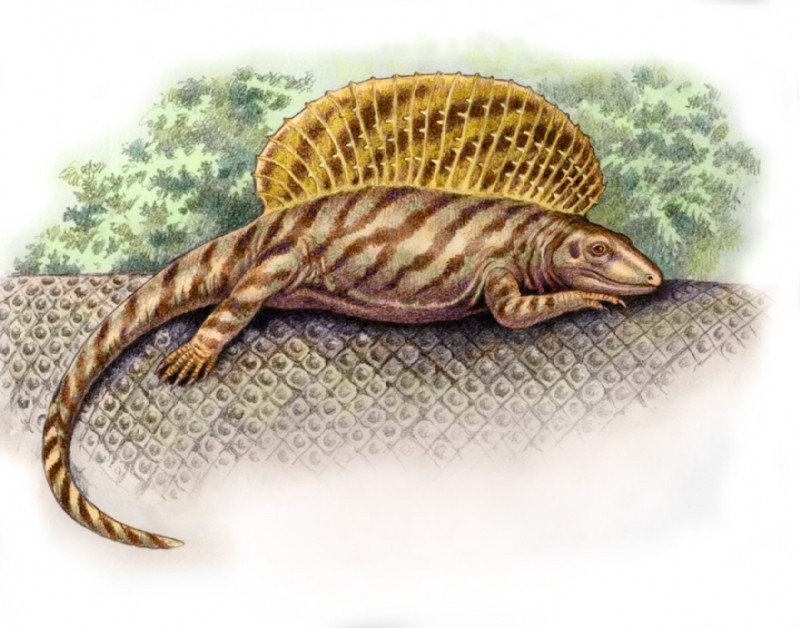Description
Still on the old mammal-ancestor theme. Ianthasaurus was one of the first sail-backed animals to live on land. It dates from the late Carboniferous period, about 302 million years ago. It was rather small, reth.aching 75 cm/30" in length. Despite looking very similar, it was nog closely related or ancestral to the well-known sail-backed Dimetrodon. Instead, it was on the line leading to the almost-as-well-known sailback, Edaphosaurus. But unlike its descendant, Ianthasaurus was apparenly not a plant-eater, but more likely caught and ate insects. Like Edaphosaurus, the vertebrate struts supporting the supposed sail, have sideways-projections along their length. We still don't know what these sails were for. I portray it here basking in the sun - the sail might have helped them warm up. Or it might have been for display rather than for any practical funtion.
Ianthasaurus, sad to say, was on a branch of the synapsid tree that came to a fairly quick dead end. But its relatives like Haptodus were fruitful in giving rise to new species, eventually leading to true mammals.

IguanasAreCool
MemberHe looks sad, like he lost his favorite poket knife while foraging for blackberries.
ImpidiDinkaDoo
Former StaffLike all synapsids they're probably confused on their own status as a mammal-relative when they're so gosh darned reptilian looking. Where do they fit in...
BlueDingo
MemberMaybe they should ask a pangolin.
ImpidiDinkaDoo
Former StaffWell pangolins are at least scale covered genuine mammals, whereas synapsids look like reptiles... but are closer in relation to mammals while just being mammal relatives.
Synapsids are odd things
Login to respond »